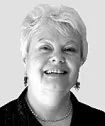Virgin had alleged that their European patent (UK) 1495908 was infringed by aircraft seats of Premium Aircraft. At first instance, the judge, Lewison J had held that Claim 1 was limited to seats having a "flip-over" construction in which self contained integers formed the bed. The Court of Appeal disagreed. In Virgin v Premium Aircraft [2009] EWCA Civ 1065, the Court of Appeal found the claim broad enough to cover seats which do not flip over and thus, in allowing the appeal, found that the seats of Premium Aircraft infringed.
The Court of Appeal also rejected an attack on the validity of the patent on the grounds of added subject matter that preserved the validity of a large proportion of all divisional applications.
Construction
Although the Virgin patent described and illustrated flip over seats, the main claim focussed on other features of the new seat. The judge got the limitation to a flip over construction from the language in the pre-characterising clause of the main claim of the patent which required "each seat unit... further comprising means forming or being configurable for forming a substantially flat bed (47, 48, 67, 74, 76)".
Jacob LJ, giving the Court of Appeal judgment, rejected this construction.
"In particular we can see no reason why the skilled man would read "further comprising" as meaning anything other than "also having the feature." "Further comprising means" is not the same as "Comprising further means...
Moreover we think (the skilled man) would be influenced in his consideration by the fact that the claim is drafted in accordance with the drafting convention of rule 29(1) of the Implementing Regulations. He would expect the pre-characterising portion to be about something the patentee considered old. Flip-over seats were not old. So he would not expect the language used to be limited to flip-over seats."
Jacob LJ set out the general principle that the court is to determine what the person skilled in the art would have understood the patentee to be using the language of the claim to mean. He also noted that in this case it was necessary to consider how much of the law and practice of the patent system the skilled reader is supposed to know.
He confirmed that with a two-part claim structure, the skilled reader knows that he is to read the pre-characterising clause as describing old art. Thus, Virgin could not have intended a flip over seat, described for the first time in the Virgin specification, to be described in the first part of the claim.
Premium Aircraft had also argued that the use of the numeral (74) in conjunction with the flat bed feature in the claim led to the limitation to a flip-over seat as, in the drawings, (74) pointed to the back of the seat. The Court of Appeal rejected this as it would be using the numeral to construe the claim as having a limitation and that was not acceptable.
Jacob LJ was clear that numerals cannot be used to influence the construction of a claim. The patentee is told to put them in and Rule 29(7) EPC provides that they will not be used to limit the claim.
"Once one comes to construe the claim, it must be construed as if the numbers were not part of it."
Added Subject Matter
In rejecting an allegation that Claim 1 of the patent included added subject matter, the Court of Appeal probably preserved the validity of a significant proportion of all granted UK and European patents.
The patent in suit was a divisional application. The parent patent describes the flip-over seat and its main claim is a claim to a flip-over seat. However, the original application as filed included an independent claim to a seating system substantially as that granted in the patent which was the subject of these proceedings.
Premium Aircraft argued that the parent only disclosed flip-over arrangements and that the flip-over feature was an essential part of the invention. Thus, in holding that Claim 1 extended to non-flip-over seats, the patent then failed to disclose matter supporting that claim.
In rejecting this attack, Jacob LJ commented "It is necessary to keep the distinction between disclosure and scope of claim firmly in mind. A claim may include far more than a specification expressly discloses. So merely because claim 1 of the Patent includes seats which do not flip-over does not mean that an express description of such seats must be found in the Parent in order to defeat the added matter objection."
The content of this article is intended to provide a general guide to the subject matter. Specialist advice should be sought about your specific circumstances.

